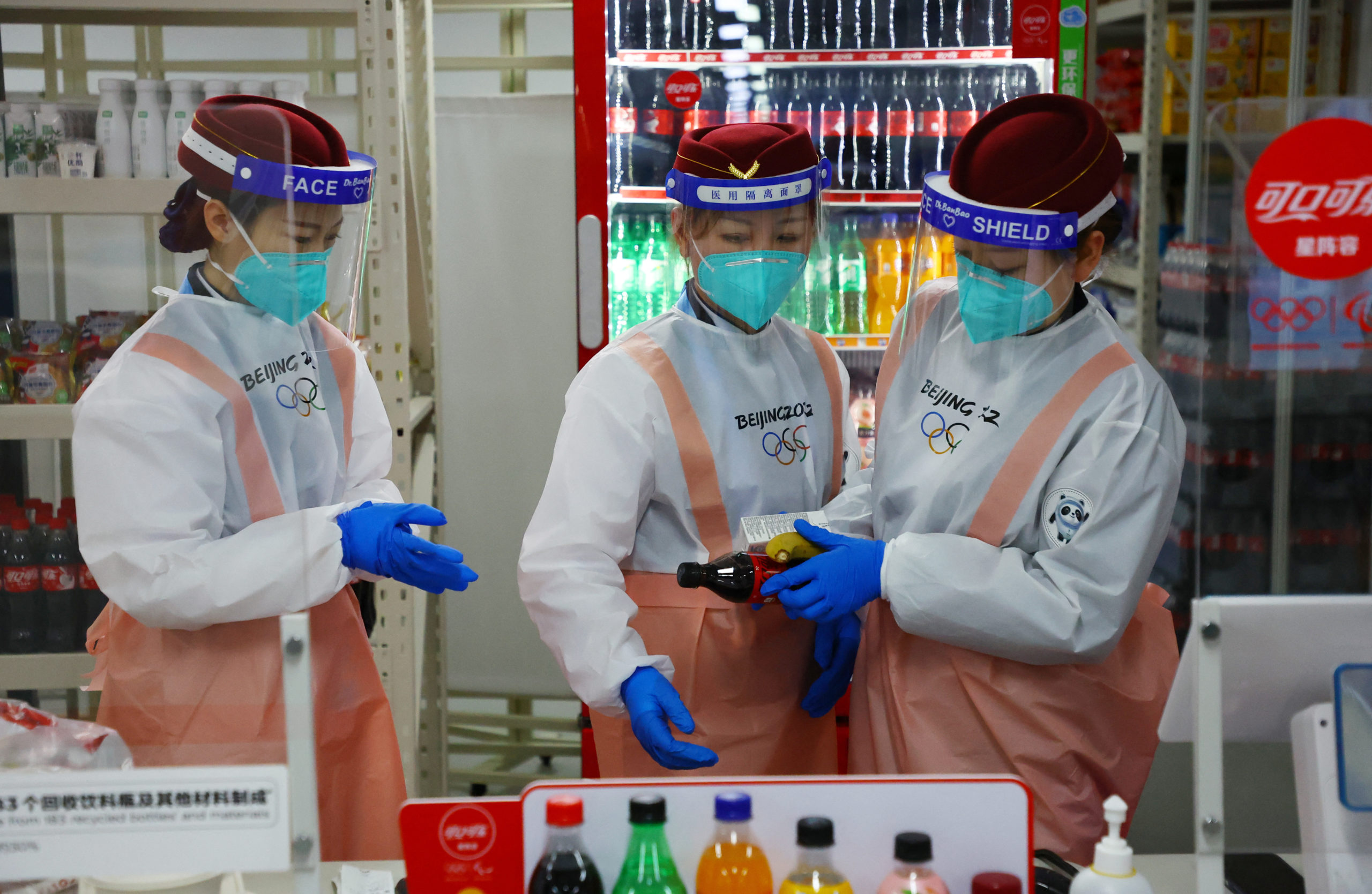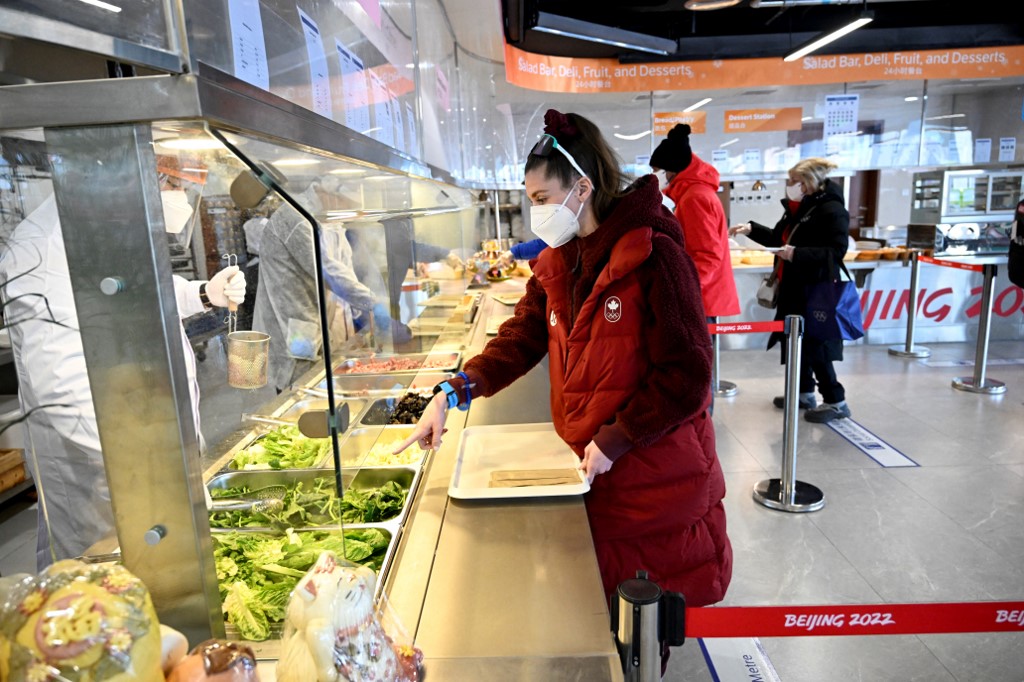
FILE PHOTO: 2022 Beijing Olympics – Speed Skating – Training – National Speed Skating Oval, Beijing, China – February 2, 2022. Staff members wearing face masks and shields prepare food for sale at the venue. REUTERS/Fabrizio Bensch
BEIJING— Olympic athletes are almost super-human when it comes to training, competing and… eating.
Consuming the equivalent of almost two dozen plates of pasta a day may be impossible for most people but not for Olympic athletes and especially cross-countries skiers at Beijing 2022.
“I have something to eat every 15-20 minutes,” Canadian cross-country skier Remi Drolet said. “Just to make sure my muscle glycogen is as full as possible. Time just disappears from you, because you’re always eating.”
Carbohydrates provide the energy to power cross-country skiers during punishing competitions in sub-zero temperatures and research has shown the average male cross-country skier must devour the equivalent of 20 plates of lasagne a day.
It is not only the cross-country skiers who need their constant calorie boosts, however.
Almost every Olympic sport requires an oversized appetite and when athletes don’t get their food, even during competitions and training, their performances suffer, said Germany’s Alpine skiing coach Christian Schwaiger.

Athletes prepare to order food at a restaurant in Beijing 2022 Winter Olympic Games village in Beijing on February 1, 2022, ahead of the 2022 Beijing Winter Olympic Games. (Photo by WANG Zhao / POOL / AFP)
“This is not catering at all,” he complained of the catering at the Alpine skiing competition venue. “There are no hot meals. There are crisps, some nuts and chocolate and nothing else. This shows a lack of focus on high-performance sport.”
The U.S. team came prepared with camping food such as bags of pasta that just need hot water to keep the athletes in peak condition.
Athletes who have been put into isolation due to COVID-19 but still hope to make their competitions after they test negative have also been asking for more food.
“He is not getting great food and he is a very big guy,” said Finland ice hockey coach Jukka Jalonen of his player Marko Anttila who is in quarantine.
“He would like to have more energy and better food there as well.”
While Anttila is feeling the pinch from a lack of calories, gorging is easy for Ireland’s Thomas Maloney Westgaard.
“I eat up to 7,000 calories a day,” he said. “So lots of plates of pasta and also desserts. I love brownies, panna cotta and all the sweet stuff really – especially Norwegian chocolate. That keeps me going.
“You can eat as much as you like, and that’s why I can’t retire yet, because it’s a good life in that way,” he said.

